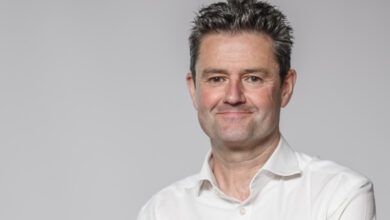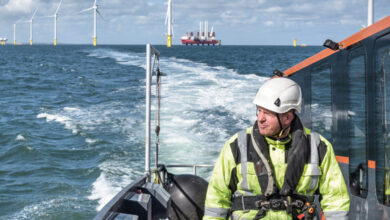The wind of change keeps blowing

Mark Stockdale, an associate in A&L Goodbody’s Projects and Energy team, explores recent trends in the energy sector.
2016 has been a stormy year for the wind industry, with the closure of the Renewable Obligation Certificates (ROC) subsidy regime, a moratorium on new grid connections and, of course, volatility in turbine prices following the Brexit vote. The anticipated change to the single electricity market with the introduction of I-SEM in Q4 next year is also creating challenges.
Nevertheless, our experience has been that the sector is as buoyant and resilient as ever. The last 12 months have seen an unprecedented level of activity in the onshore wind sector as developers work to complete their projects before the ROC cut-off date of 31 March 2017.
The project finance market has been particularly strong, with numerous wind farms being financed by both domestic and international lenders in the last year. With larger transactions in particular, portfolio financing has become more prevalent and many developers are choosing an umbrella financing structure with a single lender or group of lenders, for multiple projects.
Developers have also responded to the ROC deadline by using their own capital to progress construction prior to debt funding being arranged. We have seen promoters funding civil works, turbine down payments and even full wind farm construction on an equity basis with a view to later refinancing.
M&A activity has also been strong with a number of operational wind farms having changed hands this year. We would expect this trend to continue. In addition, some developers have sought to divest new projects now, rather than take the risk associated with ROC closure and the introduction of I-SEM.
As some greenfield projects cease to become eligible for ROCs we expect to see opportunities for established developers to acquire marginal projects which they can exploit. This may be because they have the expertise to develop them within the various ROC grace periods, or they are able to reduce costs or combine projects to be viable on a power revenue only basis.
The transition to I-SEM will create some uncertainty for new and existing wind farms in the short term. We are aware that some established utilities have stopped offering price floors in their new power purchase agreements as a result of this uncertainty. Some wind farm developers are utilising alternative power off-take structures to compensate for the lack of price floor and as a result are increasing their margins. Larger developers have also looked to trade their own power. In addition we expect to see more electricity supply companies entering the market which will increase competition.
The closure of the ROC regime without a replacement subsidy has been considered disappointing by the industry and leaves Northern Ireland as the only part of the UK and Ireland with no support for renewables. Nevertheless there remains some hope that a replacement will be introduced. In the meantime we see a continued determination to do deals and anticipate further activity in M&A and refinancing going into next year. Likewise, alternative projects such as energy storage and demand side management are expected to become more prevalent.
The landscape may be a little stormy, but the wind continues to blow.
Mark Stockdale Associate, Projects and Energy A&L Goodbody
Tel: +44 28 9072 7456
Email: mstockdale@algoodbody.com





